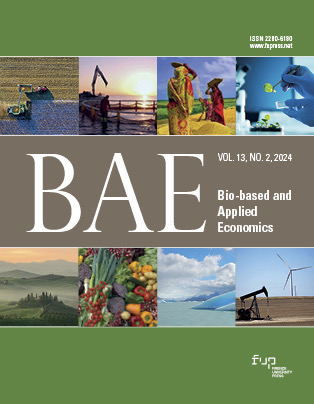Published 2024-01-17
Keywords
- Input-output,
- extended water demand,
- feasible water supply,
- extended water exploitation index,
- Tuscany
How to Cite
Copyright (c) 2024 Benedetto Rocchi, Mauro Viccaro, Gino Sturla

This work is licensed under a Creative Commons Attribution 4.0 International License.
Abstract
This study develops a hydroeconomic input-output (IO) model to evaluate the pressures that economic activities exert on water resources. For a better understanding of the sectoral and total impacts, three innovations are incorporated with respect to previous literature: i) the development of a methodology for disaggregating the extended water demand (blue water plus grey water) by economic sector, ii) the use of the IO side of the model to reclassify water demand by “extracting” and “demanding” sectors, and iii) the proposition of an improved indicator of pressure on water resources based on a “feasible” measure of water supply. Empirically tested in the Tuscany region (Italy), our findings reveal significant changes in the structure of economic pressures when adopting the proposed approach. When assessing direct total water withdrawals, agriculture accounts for 61% and manufacture for 20% of regional pressures. However, when considering only the demand for water resources exposed to scarcity reclassified by demanding sectors, agriculture falls to 5% and manufacture rises to 54%. By incorporating grey water in water demand and a “feasible” measure of supply, the regional water exploitation indicator increases from 0.05 to 0.19, and can even reach 0.30 with dry hydrological conditions, beyond the threshold for moderate scarcity (0.20). The unbalance between water supply and demand worsen even more when considering the balance of surface waters only (1.16). The proposed model can support an in-depth analysis of an economy’s water footprint, allowing impacts to be mapped from specific industries to particular water bodies. This information can support decisions about sustainable water management at the national and regional levels.






